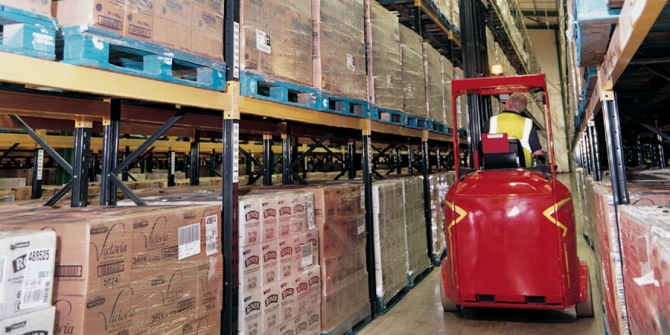Every Warehouse Manager knows that maintaining a safe and productive environment is the hallmark of success. This involves not only being familiar in health and safety legislation and clearly documenting your policy, but also ensuring that staff fully understand and observe all aspects of warehouse safety procedures. Whilst you may be well versed in the latest legislation, you may not be as familiar with the techniques of training and promoting warehouse safety amongst your staff.
This article offers tips and training techniques to ensure that health and safety doesn’t exist in a vacuum, but becomes part of your company culture and permeates the daily activities of your organisation.
Engage staff during training
I think we all agree that many health and safety training sessions can bore us all to tears if they are not relevant or engaging. Simply standing in front of your staff and lecturing them on the importance of warehouse safety isn’t very effective. Your session needs to be interactive to keep staff engaged. One way to do this is to make them answer questions, engage in discussions, and use electronic polling devices to respond to questions and compare their responses with their coworkers.
Encourage a culture of accountability
Encourage your staff to look out for one another. Health and safety is a team effort, and the more you can engender a culture whereby everyone looks out for one another, the safer your warehouse will be. This is particularly prevalent for those who sometimes work in isolation or remote areas of a warehouse where they are not visible. In these situations, employees should always be encouraged to get into the habit of informing their supervisor of their whereabouts, and always carry a lone worker protection device in the event of an emergency.
Tackle complacency
From time to time, other business priorities take over, or other environmental distractions cause employees to stop paying attention to safety procedures. This can result in an increase in risk and a rise in the number of accidents. By having a strong commitment to safety training and awareness, you can create a safety culture that seeks out and eradicates complacency, replacing it with an emphasis on alertness, planning, hazard identification, problem solving, and accident prevention.
Create a proactive safety culture
Health and safety training shouldn’t be just a checkbox when new staff join, it should be a continuous mindset to keep all your staff abreast of new legislation and how it affects them.
Training should be updated as tasks change and prioritise. For example, if staff are going to be using new machinery such as conveyors, forklifts, or other dangerous machinery they will need to be well versed in how to use it and the associated risks.
Another way to keep staff informed about new policies and legislation is to set up health and safety committees to which all team leaders should attend and be responsible for updating their individual teams.
Review past incidents and apply lessons learnt
However conscientious you and your staff are, accidents do occur. Make a point to personally review all near miss injuries and accidents so that you can be more vigilant in the future and help to avoid future occurrences. Use past incidents in your training sessions as this makes it relevant for your staff and something they might easily relate to.
Make health and safety part of everyone’s job
Assign tasks to each employee so that they themselves feel responsible for the company’s health and safety ethos. Empower employees to contribute to safety initiatives so that they feel their ideas and involvement are valued. Recognise and reward those who eliminate hazards or help create a safe environment for everyone.
Final thoughts
Safety regulations exist to protect your staff, and whilst your health and safety policies may well be documented; if they aren’t communicated effectively they are unlikely to be properly enforced. By promoting a clear safety program, it will create an environment where everyone at every level in the organisation will be aligned and focused on safety.
Article by Mathew Colley of LONEALERT, the global provider of lone worker protection solutions, offering a range of lone worker alarms, man-down devices and solutions to protect warehouse staff.







